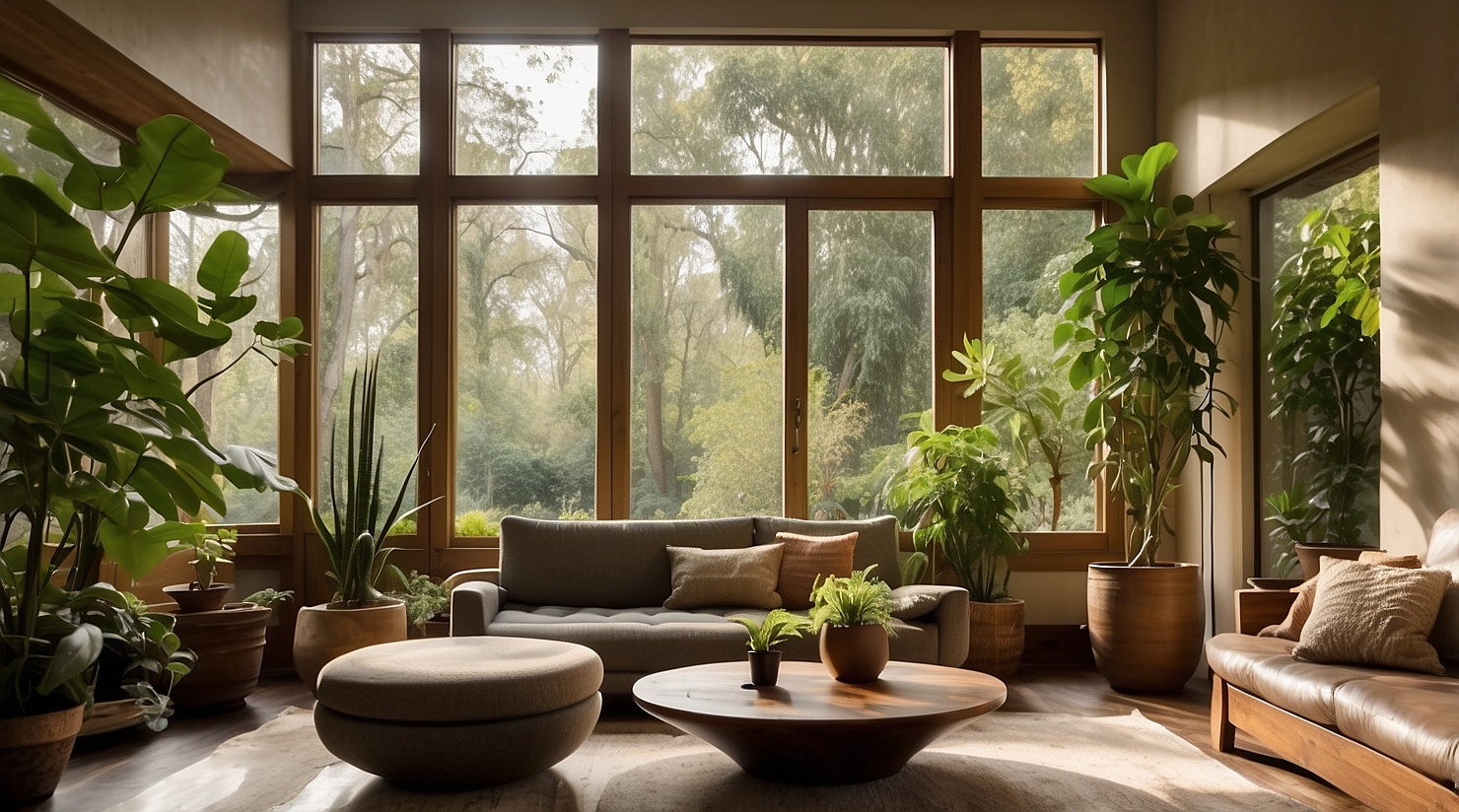Biophilic interior design makes indoor places both healthy and beautiful. It uses natural light, plants, and nature in indoor spaces. This improves how spaces look and helps people feel better, thanks to their connection with nature.
Biophilic designs enhance air quality, mood, and health in a space. They often include elements like water and use materials that feel natural. This makes your space feel good and is good for our planet, too.
This post may contain affiliate links, which means if you make a purchase from any of these links, we do make a small commission at no cost to you.
Adding these design elements can make people feel happier and more focused. Natural light and plants can also help people work better. Using earthy colors and various textures in your decorations can make your space look even better.
A cozy living room with large windows overlooking a lush green garden. The room has wooden furniture, indoor plants, and natural colors like earthy brown and sage green. A small fountain sits in one corner, trickling water softly. The room is flooded with natural light and has a warm, inviting ambiance.
Good design can do a lot, like help air flow and bring in natural light. It also means your space is eco-friendly and good for your health. Adding plants can kick off your journey into green design.
What is Biophilic Interior Design?
Biophilic interior design aims to enhance our bond with nature. It’s based on the thought that we naturally want to connect with the natural world. This concept uses living plants, natural light, and materials to make indoor spaces feel more like the outdoors.
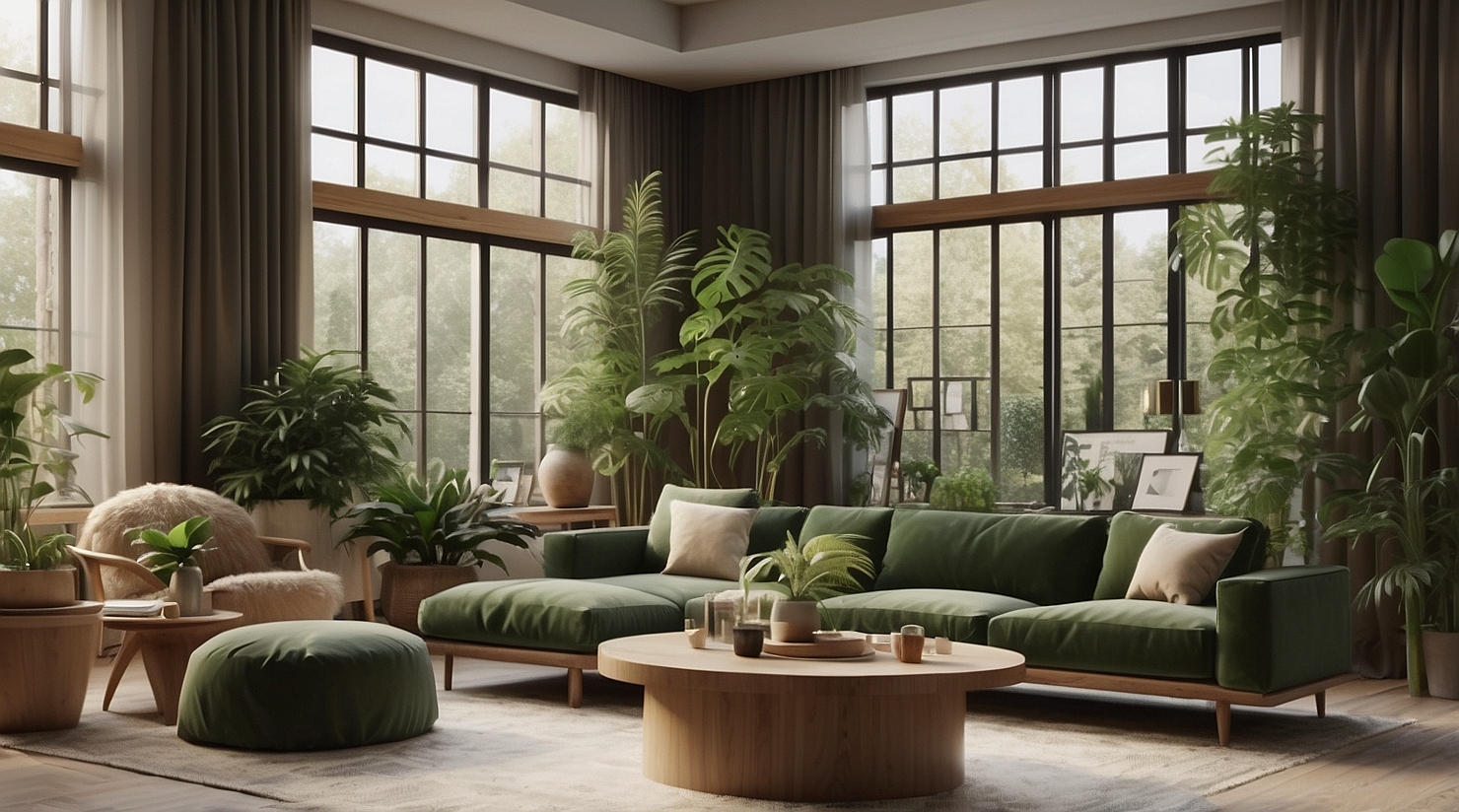
Designers use elements like plants and natural shapes to make us healthier and happier. Bringing nature into buildings can help lower stress and improve how we think. It can also increase creativity and make us feel better overall.
Most of us are inside for the vast majority of our day. That’s why it’s so important to include nature in our indoor spaces. Doing this helps us feel like we’re still connected to the natural world.
Biophilic interiors do more than just look pretty; they’re good for our health and well-being. Putting nature at the center of design can help heal us, inspire us, and make us feel comfortable. It can also make us physically healthier by improving our heart and blood pressure.
By including biophilic elements, interior design can boost our health and mood. This fits well with today’s focus on designing for people. It creates spaces that feel like a natural, healthy place to be.
Benefits of Biophilic Interior Design
Biophilic Interior Design has big pluses for us, both mentally and physically. With 90 percent of our lives spent indoors, adding things like natural light and plants is vital. These design elements help us work better. For example, natural light helps our bodies make more Vitamin D. This keeps us happy and fights off the blues in winter. Also, having plants around cleans the air and makes our minds sharper. Workplaces with such features boost productivity by about 15%.
Spaces that use biophilic design are good for our minds and bodies. Companies notice less sick days taken by employees because they feel happier and healthier. Using natural materials and plants help us chill out not only at work but also at home. They make us feel peaceful and think clearer.
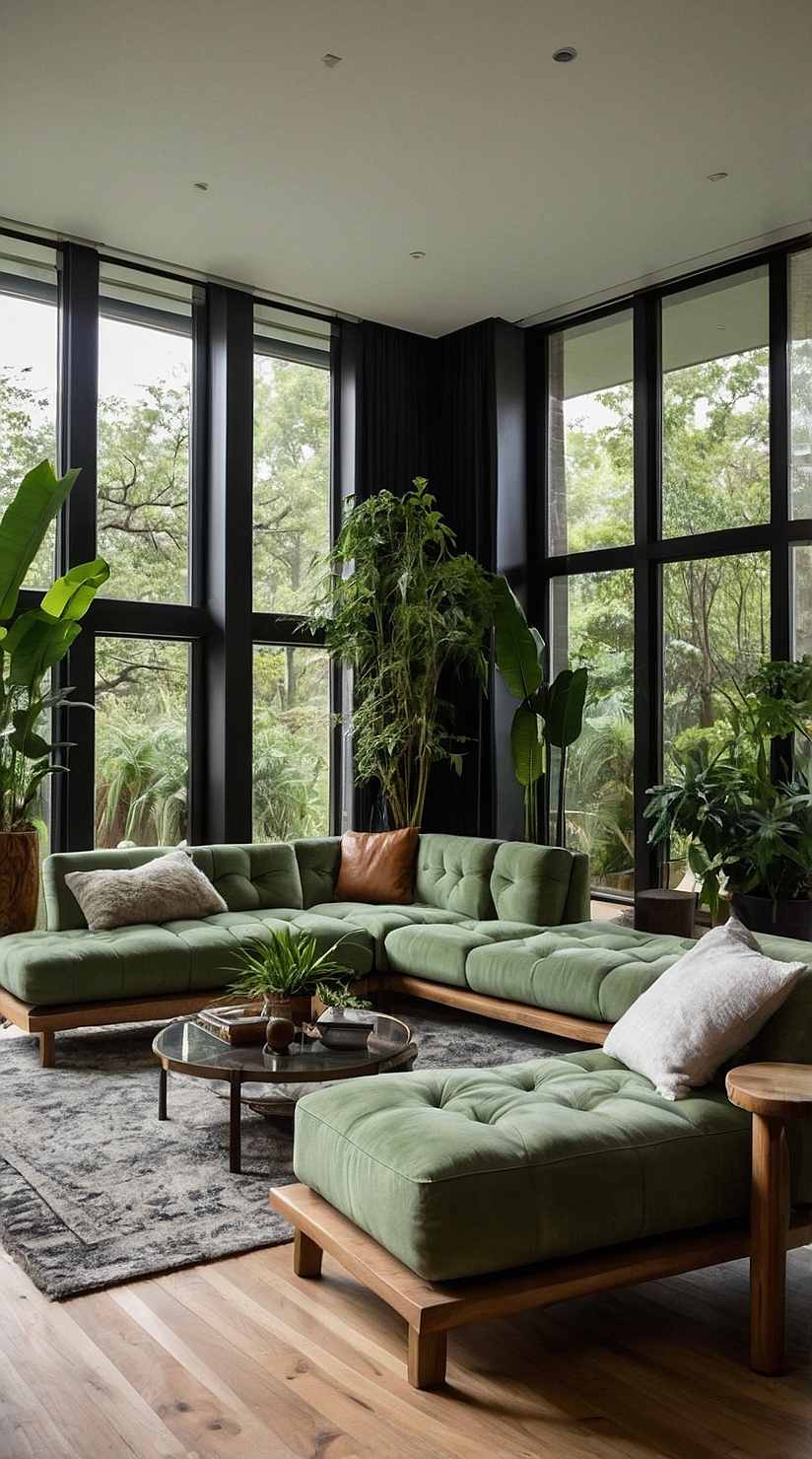
To add, having biophilic designs around is good for our brains and creativity. They keep stress low, which is really important for our mental health. The World Health Organization says stress is a top cause of illness globally. So, these designs are also key for making sure we all keep loving and protecting nature for future years.
Maximizing Natural Light
Getting lots of natural light at home is key, not just for looks. It can help you sleep better and feel more energetic every day. Just set up your furniture smartly and choose window shades that let the light in. If some parts of your home are dim, you can use full-spectrum light bulbs to get the same health benefits from light indoors.
Homes that are filled with light often sell for more, up to 5% above the price. They also find buyers quicker. Natural light makes your home feel like it’s a part of nature, especially if you use big windows, skylights, and glass doors. This boosts your mood and makes you feel healthier.
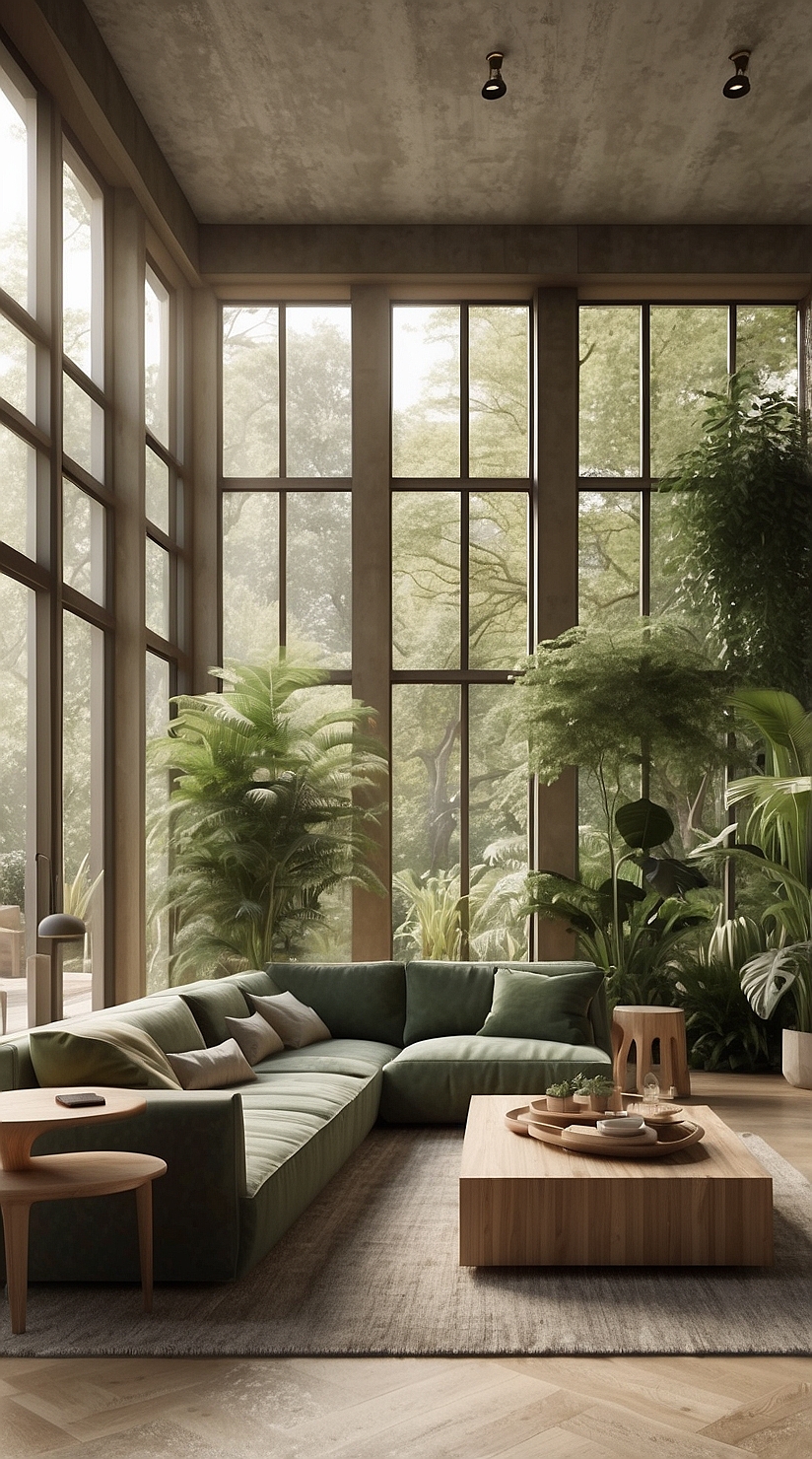
People love their homes more when they’re designed to catch the light, with up to 94% happier customers. You can do this by adding mirrors, picking light paint, and keeping your windows clear. Homes like this use less energy, saving up to 75%, and are better for the environment.
Rooms with plenty of natural light mean you might miss fewer days of work, up to 16% less. So, adding light to your living areas can raise both the value of the property and the health of its inhabitants. Your family will enjoy better well-being thanks to the sun and its Vitamin D.
Incorporating Plants for a Greener Home
Adding indoor plants makes your home more beautiful and healthy. We spend most of our time indoors. So, having plants around improves our health and makes us happier. Plants clean the air by taking in toxins and giving off oxygen. This makes the air better for us. It also lifts our spirits and energy.
Plants like succulents, snake plants, and peace lilies look nice and boost your health. They need little care and purify the air well, improving your home’s feel. They also help you relax and feel peaceful.
Choose plants of different sizes and types for a more engaging space. This makes your room look great and meets different care needs. A mix of plants makes your home feel fresh and happy. From big leafy plants to small succulents, greenery adds life to your place.
Using Natural Materials in Interior Design
Embracing natural materials is key in Biophilic Design. It aims to bring parts of nature inside to boost health. Materials such as bamboo, cork, and stone are gaining popularity. They are chosen for being strong and good for the planet. Bamboo is a top pick because it puts out 35% more oxygen than most wood. It’s ready for use in one to five years and can grow very fast. Rattan is also quick to renew, needing just 5-7 years to grow new stock.
Cork stands out as well. It comes from the bark of cork oak trees every nine years. Once they’re mature, these trees give a great material that’s gentle and brings a cozy feel to places. Along with that, stone offers a feeling of timeless beauty. It’s cool to the touch because it moves heat well.
Choosing these eco-friendly materials connects our indoor spaces with the outdoors. This makes places better suited for living and working. We spend most of our time inside. So, using items like bamboo and cork can really make a difference for our well-being. They create a soothing vibe, helping with focus and relaxing the mind. Picking the right materials for your home isn’t just good for you. It also helps the Earth stay green.
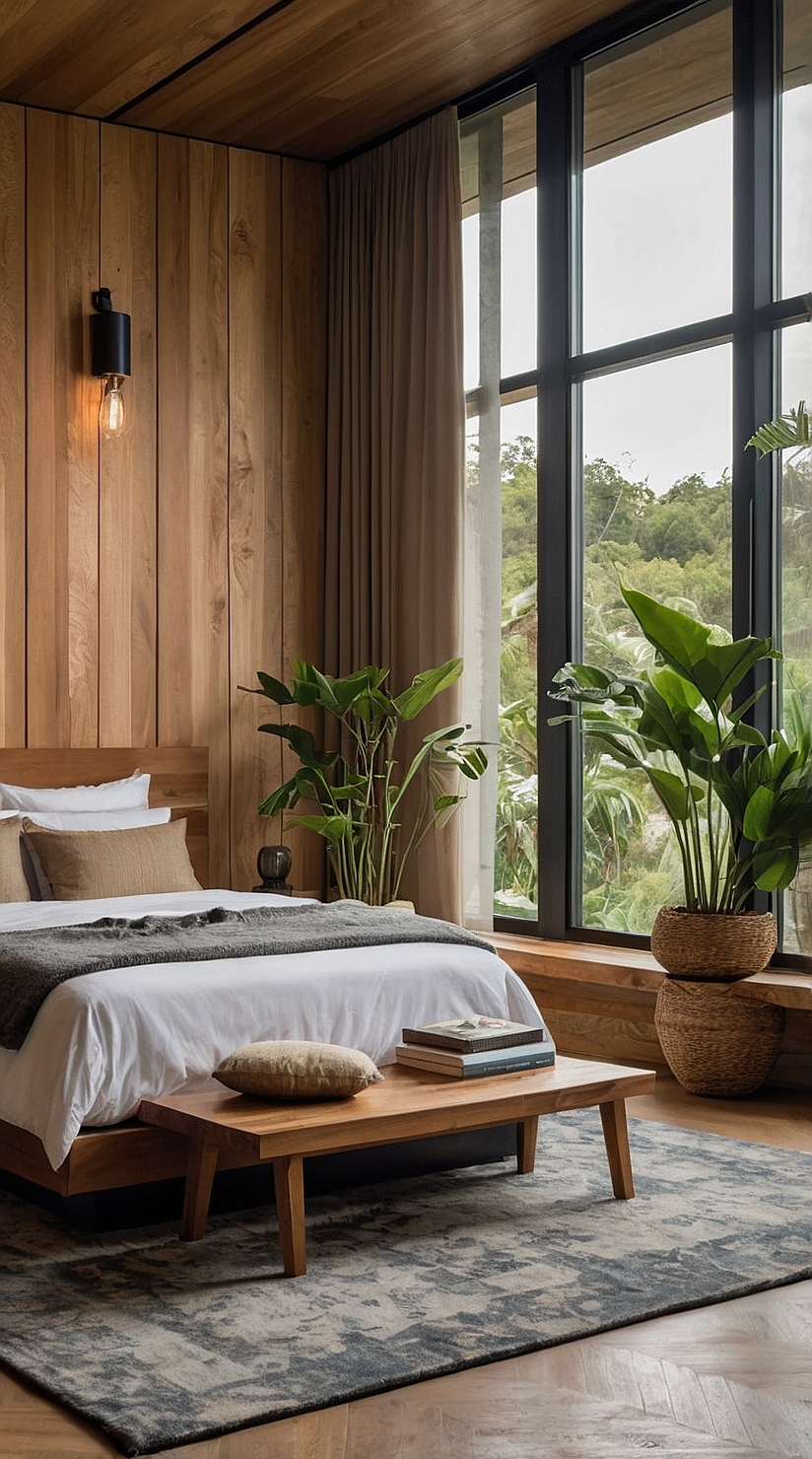
Creating Soothing Water Features
Water features bring life to a room with their beauty and calming sounds. You can use tabletop fountains, wall water features, or even indoor ponds to make your place more soothing. The soft trickling of water helps people relax and reduces stress. This turns your home into a peaceful haven that’s good for your mind and body.
Adding water features also creates a connection to nature that helps with stress. Even smaller elements like mini waterfalls and aquariums can add peace and movement to your space. So, by including these features, you’re building a serene space that’s perfect for unwinding and feeling well.
Colors Inspired by Nature
Drawing from the colors of nature transforms your home. It makes it both calming and energizing. For instance, blue shades, the world’s top pick, remind us of the sky and water. Green, the color of growth and renewal, links us to nature’s life present everywhere. Being in green surroundings boosts our mood and health.
Earthy browns bring the outside in. They remind us of autumn and cozy living. This adds a welcoming feel to your home. Drawing inspiration from Vermont, you can include things like woven materials. These add layers and a touch-me aspect to your decor.
Adding blues and teals to your space brings in sea-like serenity. By closely looking at water, you find an array of calming colors. The sky, in all its blue and white variations, offers so much color inspiration.
Adding flowers and plants as decor really amps up your space. It’s more than just looks; greenery improves focus and makes your home work better. A focus on nature’s color palette keeps your space feeling new and tied to the outdoor world.
Textures and Patterns from Nature
Using nature’s textures and patterns is a great way to design your home. You can use wood’s markings or marble’s lines. These elements make your space look and feel better. Cork floors are soft and reduce noise, making your home quieter. Clay plasters help keep the air’s moisture at good levels. This is good for people with allergies. Vertical gardening makes it easy to add plants when you don’t have much floor space.
These natural elements aren’t just pretty; they can boost our health. Wood and stone can change how we feel. They can make us feel happier and keep our emotions in check. These materials also make sure that the temperature and air in our home are just right. By using materials that feel like nature, we can make our place feel like part of the outside world. That makes for a happier home.
These natural patterns can work inside and outside. They fit many architectural styles. Designs inspired by nature can make us feel more connected to it. Choosing local materials shows respect for the place we live in. Mixing different natural patterns reflects the mix of life found in plants and lands.
Adding patterns like leaves, flowers, and stones to your home brings nature closer. Things like leaf-printed items and nature-inspired wallpapers make your space feel alive. They connect us to the beauty of the outside world. By doing this, we can make our home look better and feel like a true part of nature. This helps us feel calm and at peace.
Biophilic Elements in Different Rooms
To make your home feel peaceful, add nature inside. In the kitchen, a herb garden window gives you fresh ingredients and cleaner air. It also looks great. Use wood for cabinets. This adds a cozy, natural feel to your kitchen.
The bedroom can also benefit from nature-inspired items. For bedding and rugs, choose wool and jute. They make the room snug. And, put plants like ferns and fiddle leaf figs around. They clean the air and help you sleep better. All these touches help you relax and feel refreshed.
In the bathroom, lush plants and water features can turn it into a spa. Try adding fountains or small ponds for calm water sounds. Lots of natural light, maybe through skylights, improves the vibe. It guarantees a nice morning.
By adding nature everywhere, you make your house more than beautiful. It becomes a space that boosts your health and mood. Enjoy a home that’s a cozy sanctuary, thanks to the wonders of nature.
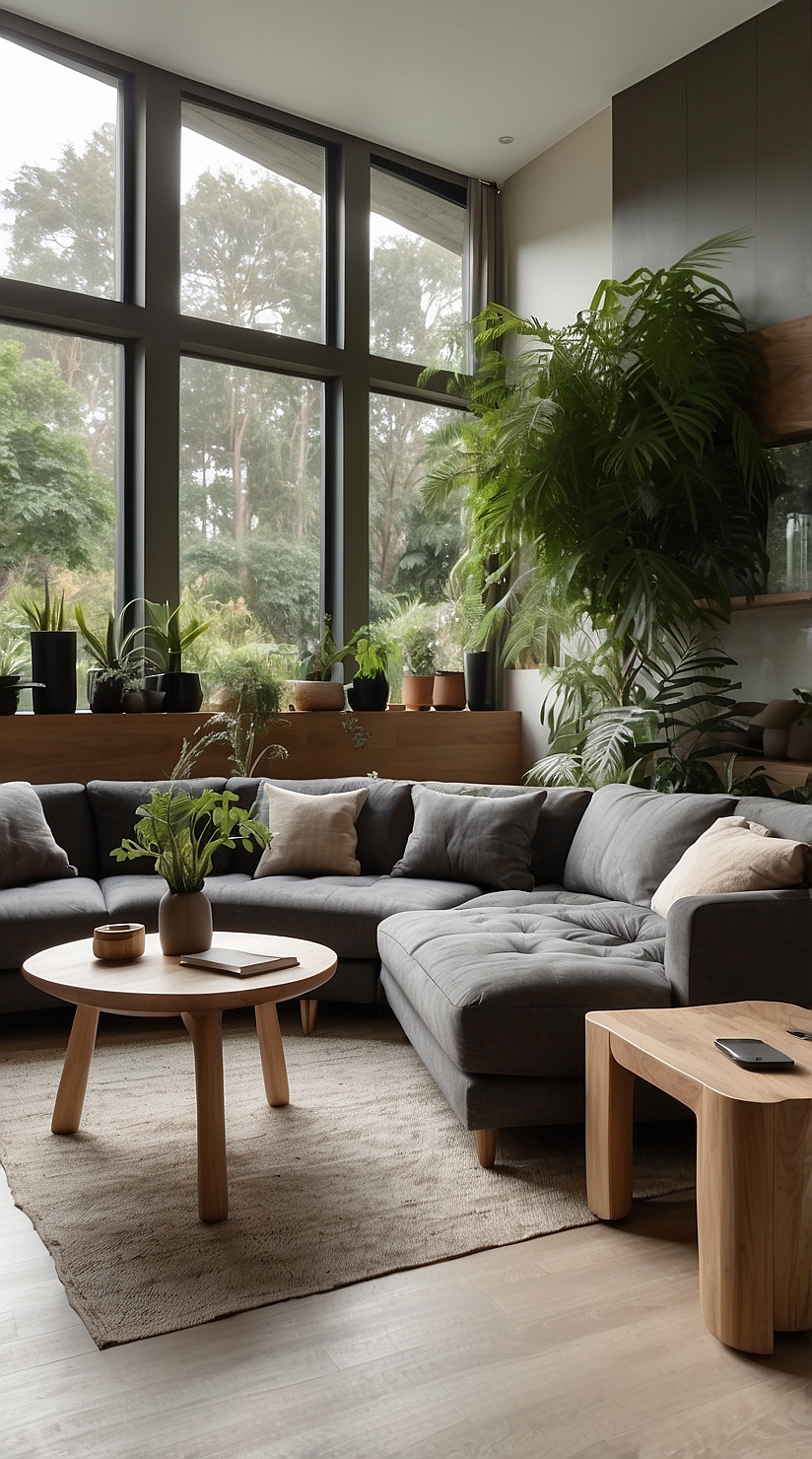
The Role of Fresh Air
Fresh air is key in a home designed with nature in mind. Since we’re indoors most of the time, good ventilation is crucial. The moving air wakes up our senses and makes us feel better. It helps our health and mood a lot, which is great for us. So, it’s vital to let fresh air move around our homes by opening windows or using good ventilation systems.
It’s also important to plan the house so wind can easily blow through, improving the air inside. We should use things like non-toxic paint that keep the air clean. This doesn’t just help ventilation; it follows the nature-focused Biophilic Design. It makes us healthier and more productive. Getting fresh air in our homes isn’t just nice; it’s a key to living healthier.
Incorporating Biophilic Interior Design on a Budget
You can bring nature into your home without spending a lot of money. For example, buy small, healthy plants from local nurseries. They usually don’t cost much. Another smart choice is using salvaged wood. You can turn it into cool furniture or decorations for very little money.
Want something personal and budget-friendly? Try making your own biophilic elements. A vertical garden or plant shelves are great DIY projects. You can also add mirrors to reflect light and make your space feel more natural. Using bamboo or rattan for decorations also makes your home feel like it’s part of nature.
Look for deals on plants and natural decor at discount stores or online. You can also change the look by moving furniture to see more greenery outside. Adding light curtains gives a fresh, outdoor feel at a low cost. Using earthy colors in your design also helps connect your space with nature.
Conclusion
Adding biophilic design to your home goes beyond looks. It creates a deep bond with nature. Plus, it makes your space good for the earth, your health, and your mood. This approach fits our natural desire to be close to nature, benefiting our mind and body.
This design has been shown to lower stress and boost brainpower, creativity, and happiness. Think about it, we’re indoors most of the time. The air we breathe influences our health a lot. By bringing in plants, you can clean the air and make your mind sharper. You’d also get to feel a variety of natural sensations, helping you relax and sleep better.
Guess what? Biophilic design helps the planet too. Using wood, clay, cork, and rattan makes your place look natural. These materials are earth-friendly and can often be used again. Natural elements indoors can ease anxiety, lift your spirits, and get your creative juices flowing. They mirror the rich and varied world of nature.
In the end, going for this type of design can make your home a happier, more peaceful place to be. It helps you live in sync with nature while you enjoy every part of your day. By choosing biophilic elements, you make your home both beautiful and green, sticking to the biophilic design beliefs.

